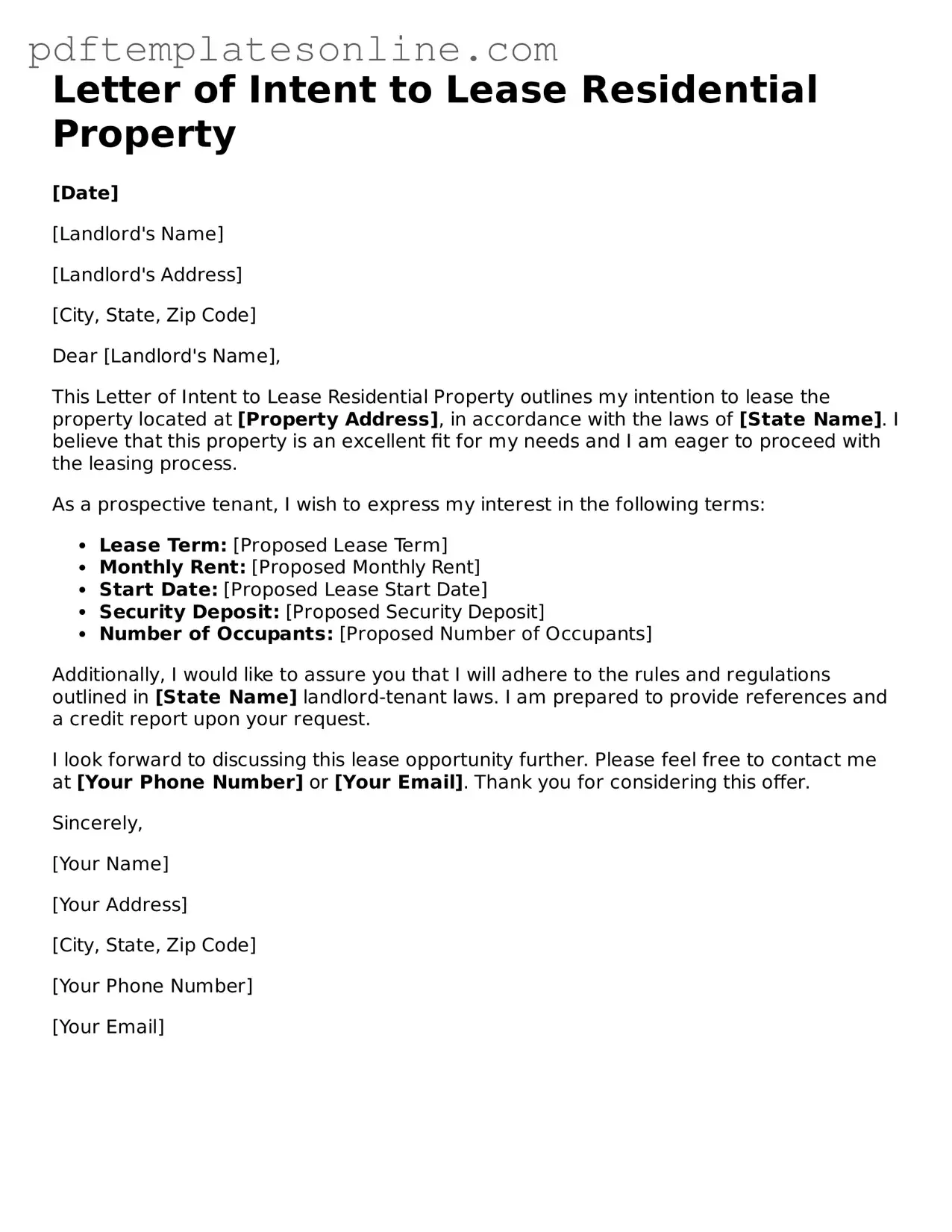Filling out a Letter of Intent to Lease Residential Property can seem straightforward, but many people make common mistakes that can lead to misunderstandings or delays. One frequent error is not providing complete contact information. When applicants leave out phone numbers or email addresses, landlords may struggle to reach them for follow-ups or negotiations.
Another mistake is failing to specify the intended lease term. Without clear information on how long the lease is expected to last, both parties might have different assumptions. This can create confusion later on, especially if the landlord has other interested tenants.
Many individuals also overlook the importance of detailing the rental amount. Stating a vague figure or forgetting to mention additional costs, such as utilities or maintenance fees, can lead to disputes. It’s essential to be as precise as possible to avoid any surprises down the line.
Some people neglect to mention any special requests or conditions they might have. Whether it's a pet policy or a need for specific amenities, including these details can help the landlord assess the application more accurately. Not addressing these needs upfront may result in the applicant being overlooked.
Another common error involves the omission of the intended move-in date. Providing a clear timeline is crucial for both parties. If the landlord is expecting a tenant to move in sooner than the applicant is available, this misalignment can cause frustration and hinder the leasing process.
In some cases, applicants fail to check for typos or errors in their personal information. Simple mistakes, such as misspelled names or incorrect addresses, can create confusion. It's always a good practice to review the form before submission to ensure accuracy.
Additionally, some individuals forget to sign the document. A Letter of Intent is not complete without a signature, and submitting an unsigned form can lead to delays. Ensuring that all required signatures are in place is a vital step in the process.
Another mistake is not reading the entire form carefully. Skimming through the instructions or terms can lead to misunderstandings about what is required. Taking the time to read everything thoroughly helps avoid potential pitfalls.
Some applicants also fail to provide references or proof of income when required. Landlords often want to verify that potential tenants can afford the rent. Not including this information can weaken an application and give the impression of unpreparedness.
Lastly, many people forget to follow up after submitting the Letter of Intent. A quick email or call can show interest and initiative. It can also provide an opportunity to clarify any points or ask questions that may arise during the review process.
